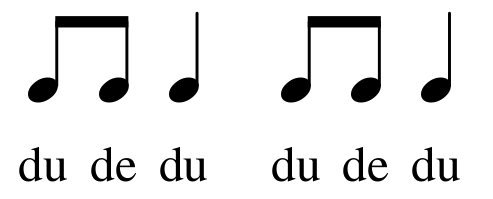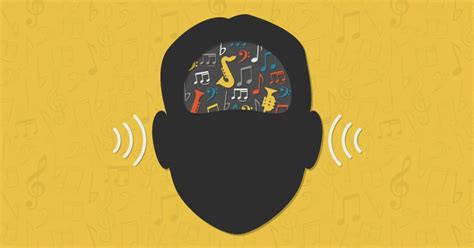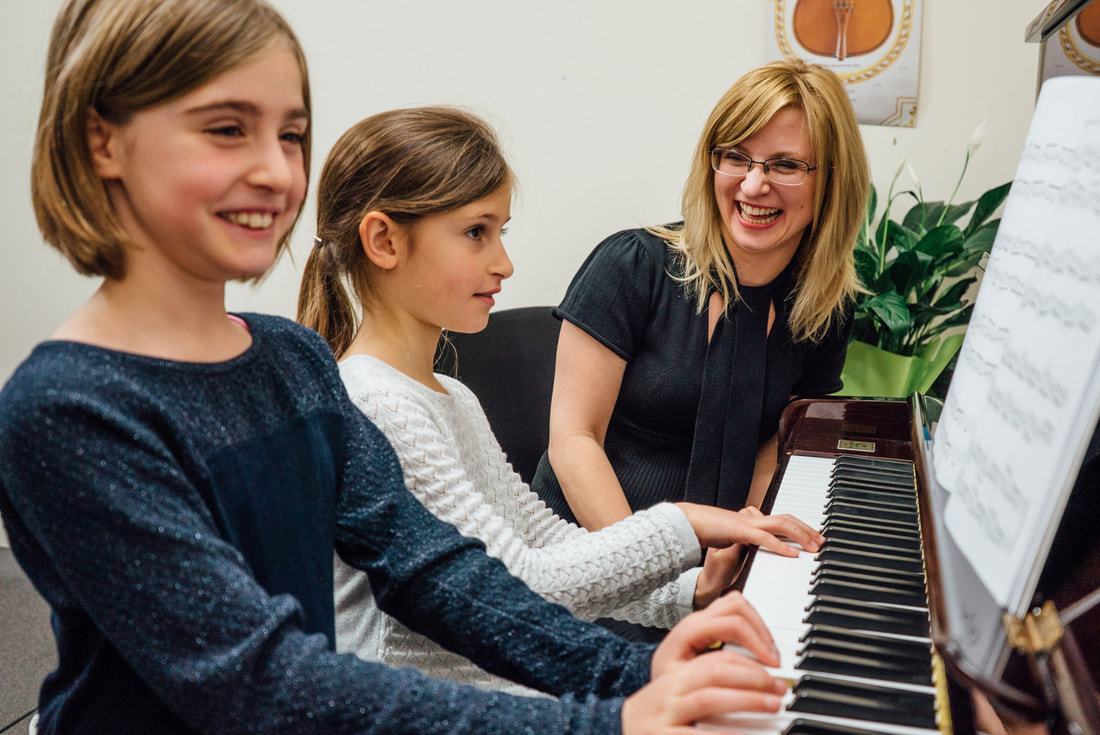|
If your child is in the Music Moves programme you (and they) may start to wonder when they will start to learn to read music, after all most piano lessons involve learning to read music almost from day one. Music Moves is different. In this audiation based approach children learn music first, and music reading later. Audiation: the ability to think music in the mind with understanding Learning about music is not learning music. If your child is in the first few years of the programme then they are currently busy learning music through listening to it, moving to it and making it. They are developing their audiation. Formal music reading will be introduced when they are ready to grasp abstract concepts, around age 10-11. At that stage it’s their audiation that will help them read music with understanding. More on that later.
Imagine how impossible that would be – how would you describe a world they had never experienced, how could they ever deeply understand about the world only through reading about it. Instead of being filled with joy and wonder, your child’s experience would be dry and meaningless. Music is wonder, awe, sadness, despair, joy, happiness. Music takes the experience of being human and delivers that experience back to us through sound. It is with us when we’re happy, when we’re sad, when we want our mood lifted, when we want to relax – there are thousands of pieces of music for every human emotion and experience. If music reading is introduced as soon as a child starts learning an instrument then they are at risk of missing out on the wonder of music. Music Moves for Piano is based on Music Learning Theory, developed by Dr Edwin Gordon who spent his career studying how children learn music and coined the term 'audiation'. People who audiate can:
If we want children to easily read music then we have to start from an aural / oral perspective When children can grasp the concept that: sounds the same as and both use the same rhythm syllables but are written differently, then they are ready to formally learn how the musical patterns they already know are notated. Taught in this way, the ear, the heart and audiation are at the centre of the music learning experience. Before this children will be exposed to how music is notated by looking at the score and noticing patterns, so they will start to recognise patterns before the formal instruction begins. This puts them in a good place as they will start to become familiar with music notation long before they are expected to read and play from it. Gordon's research shows that children can grasp abstract concepts such as this, around age 10-11
I am just starting to experience audiation. So far this means I sometimes just ‘know’ what is coming when I sight read (hopefully that will improve some more!); I hear more of the important notes in the music I’m playing; I can learn and retain complex pieces more quickly. I see what children in the programme can do, the joy they derive from their lessons and music making and am excited to see what lies ahead for all of us. It might look to both you and your child that you are not making progress, or that progress is too slow, or that you are not learning what you expected to learn. But the learning is happening in your child’s audiation. You can’t see this, you will only hear it, and they will experience it as time goes by. Your child’s experience and knowledge of music is growing steadily and will gradually become evident in the way they play and change their pieces, their improvisations, their compositions. If you want to compare to their peers look at more than music reading. Ask yourself, can they do the things people that are learning to audiate can do? They may be able to read music, but you can do so much more than this: you can make your own music. I'll leave you with a quote from the author of Music Moves for Piano: ‘Music notation, in itself, cannot teach music reading. What this means, is that with a familiar music vocabulary (what we are building from day one of Music Moves) children learn to understand and play music they have never seen or heard before. In other words, they can sight read music far more easily than those who have not been taught this way. I hope you will agree this is a goal well worth pursuing.
0 Comments
What do you feel when you listen to music? If it’s uplifting music then you might feel joy, if it’s sad music you might feel down, or even despair, if it’s grand music you might feel expansive and powerful...so what is music? Answers that come to mind are it’s creativity, it’s life, it’s feelings, it’s expression, it’s self expression….what answers come to mind for you?
This led me to consider what then is the purpose of piano lessons, if music is creativity and life, expression and feelings then surely the purpose of piano lessons (or any other instrumental lesson) is to access these feelings, to express them in music. What do students need in order to be able to experience music this way? In short audiation…..watch this video to see audiation in progress - these musicians 'think' music so well they can create great beauty never having met. If this isn't life, then I don't know what is!
Audiation means to ‘think music’, or in the words of Dr Edwin Gordon ‘audiation is to music as thinking is to language’. Just as we ‘think words’, the right sort of teaching can teach people to ‘think music’. (If you’re curious, Dr Gordon spent his academic career studying how children learn music and developing Music Learning Theory, the rigorous academic foundation of Music Moves.) Audiation means 'to think music'
The wrong sort of music teaching doesn’t teach people to ‘think music’ it teaches them to interpret dots on a page that they generally don’t understand. Think how it sounds when your child reads aloud a book they don’t understand. They read the words, but they don’t understand them. The words have no meaning to the child and it sounds that way to the listener. The same thing can, unfortunately, happen in music playing as well.
The right sort of music teaching teaches children to play with understanding
With Music Moves, students’ audiation is developed from day one and developed over years. They hear and echo tonal and rhythm patterns which are the building blocks of music, they feel and move to the beat, they listen to and play a varied range of music using the entire range of the piano. They develop piano technique that allows them to achieve the sounds they want to achieve, they hear and tell stories about the music they are playing. They experiment and explore sounds at the piano, they compose their own music as well as that played by others, they improvise and create. All these areas are developed over the child’s music learning journey, which becomes an extremely rich and fulfilling one.
Music at its best is enjoyed with other people, it provides a bond, a common experience, a language everyone can, in part listen to even if they don’t fully understand it. Music Moves for Piano is unique, not just in that it really does get to heart of what music is about – audiation (thinking music) - but also because it is designed to be taught in small groups. At Surrey Music School children studying Music Moves learn in groups of around 3. They move together, sing together, make music together, as well as having frequent opportunities to do these things solo as well. From day one your child will be making music solo and with others, learning to express themselves, developing their ear and piano technique and having a joyful, meaningful experience.
You may have noticed musicians performing with feeling, with flow (lost in the moment), with meaning… have a look at these videos to see audiation in action:
Why all cows do not eat grass, or, in other words, why using mnemonics to learn to read music does not work!
When you learned piano as a child, you may have learned to identify note names using mnemonics. There are four you may have had to learn. Examples include:
For the treble clef spaces: FACE For the treble clef lines: Every Good Boy Does Fine For the bass clef spaces: All Cows Eat Grass For the bass clef lines: Good Boys Do Fine Always
Here we have four sentences to remember, the ones for the notes on the lines are confusingly similar! So not only does the student have to remember four sentences, he or she also has to remember to which clef they refer and whether they refer to line or space notes. The student also has to remember that the mnemonics all start from the bottom of the stave and go up. Are you confused yet? I am!
Now imagine you're under 10 years old - can you imagine the confusion and struggle a younger person (possibly your child) will face?
I hear many adults still using mnemonics to identify note names. If mnemonics worked, they would not have to keep referring to them. They would simply be able to name the note instantly (like we piano teachers can!). So what is it that musicians do to be able to name notes they may not come across much, for example on 3 or 4 ledger lines? We name them with reference to another note that we do know. This is called a landmark note. Enter the realm of landmark notes and reading by interval! This is the strategy that I and many of my colleagues in The Curious Piano Teachers use to teach note reading. It's also used by the tutor book Piano Safari. When reading is introduced we start with reading intervals of a second (steps) up or down from only two landmark notes; treble G and bass C. The advantage of doing things this way is that once a student can recognise and play a second, he or she can recognise and play a second written anywhere on the stave, including notes he or she can't actually name. This leads to far more fluent reading and playing as students do not need to spend time processing note names, just intervals. It also allows for a wider variety of music to be played. As students progress they learn to recognise intervals of 3rds, 5ths, 4ths and so on. Learning this way also has a profound benefit for the aural element of music exams where students have to name intervals. Did you have to do that as a child? Was it difficult? I relied on my perfect pitch in this area of the exam, not my instant recognition of the sound of an interval. In the intervallic approach, students are introduced to intervals from very early on in their learning and do not have it suddenly sprung on them a few weeks before an exam. Teaching this way is a gift to our piano students. It reminds me of the Chinese proverb 'give a man a fish and you feed him for a day. Teach a man to fish and you feed him for a lifetime'. We could just as easily change this to 'teach a student a note name and he can play one note. Teach him a landmark note and reading by interval and he can play any notes'! 'Teach a student to read one note and he can play one note. Teach him a landmark note and reading by interval and he can play any notes'!
Reading this way benefits students' sight reading because again, they are not having to process note names, just recognise and play intervals. I did not learn this way but I do teach it! I have seen for myself the benefits for students' reading and playing fluency. I know it works, not only because I see it in my students but because when I come across one of those pesky ledger line notes, if I just read the interval, I can instantly play the note!
Are you curious about landmark notes yet? Have a look at this video from Music Mind Games which shows all the landmark notes. All other notes that students up to about grade 6 will come across are less than an interval of a 4th or 5th away. So provided a student knows his or her landmark notes he or she will be able to read the music with much less of a struggle than one that reads by note name. Of course there is a place for knowing absolute note names but that is a post for another day and in the intervallic approach comes a bit later (it also doesn't use mnemonics!). Last week's blog discussed the benefits of music teaching but raised the fact that the benefits do not occur when the teaching is unstructured and poor quality. Read on to find out what bad music teaching looks like and discover what makes good music teaching.
The Kodaly approach to music teaching is very similar to how children learn to speak. As babies they listen and begin to explore the sounds they can make. As they grow they start imitating words they hear and finally they begin to put words together to make their own sentences. Imagine if they were not allowed to make any sounds until they first learned to read! It sounds ridiculous however this is what 'traditional' music teaching expects. With no musical foundation children are expected to interpret musical symbols - is it any wonder that they struggle and don't enjoy it. What did your music lessons look like? Did you learn through songs and games, developing your musical skills away from your instrument or were you a victim of traditional teaching and expected to somehow 'know' all these things without being taught? Next week's blog looks at the importance of teaching musical skills and concepts within a framework; so that the learning is structured and progress can be measured other than using exams. In the meantime if you're interested in reading more about the damage that traditional piano teaching causes why not check out this excellent article 'How Traditional Piano Lessons Cripple Our Children'.
|
Caroline BlountDirector of Surrey Music School. Archives
January 2024
Categories
All
|












 RSS Feed
RSS Feed